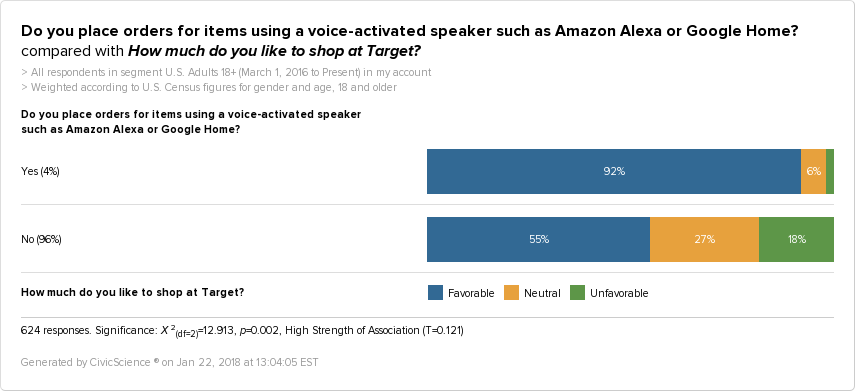The Gist: 92% of smart speaker owners do not use the device to place orders.
I do this adorably hilarious thing when I visit my sister’s place. When she’s out of the room, I call on her Amazon Alexa to add a hodgepodge of ham-related products to her shopping cart. My sister will return to the room, and I’ll have it read off the library of pork I’ve ordered. It never ceases to amuse me, but I’m running out of ham products at this point.
This joke is good-natured only for the fact that my sister has never purchased anything using the voice activation feature of her Amazon Alexa. She is in the supermajority on that.
Of all US Adults who own voice-activated speakers, only 8% use them to place orders. Considering the small percentage of US households who own a speaker at all, the 8% becomes a drop of a drop in a bucket or some other such complicated equation that merely means very few people order items using their voice.
So, online competitors and brick and mortar retailers have little to fear of Alexa–for now.
Let’s say you wanted to start worrying about voice-activated shopping. Which retailers could see a dip in sales in the future? If it’s going to affect anyone, look no further than Target. People who use their speaker to order items are much more likely to be fans of the store.
When you consider what people are ordering via a smart speaker (sundries and groceries as the ads would lead you to believe), Target could see some trouble down the line. The retailer has made strides to bulk up its same day in-store pick up and same day delivery offerings, but time will tell if it’s as convenient as ordering from Alexa.
Before anyone gets too excited, 8% is a small portion of the smart speaker market. Retailers like Target shouldn’t be running for the hills just yet. The vast majority of smart-speaker owners don’t use the device for shopping.










